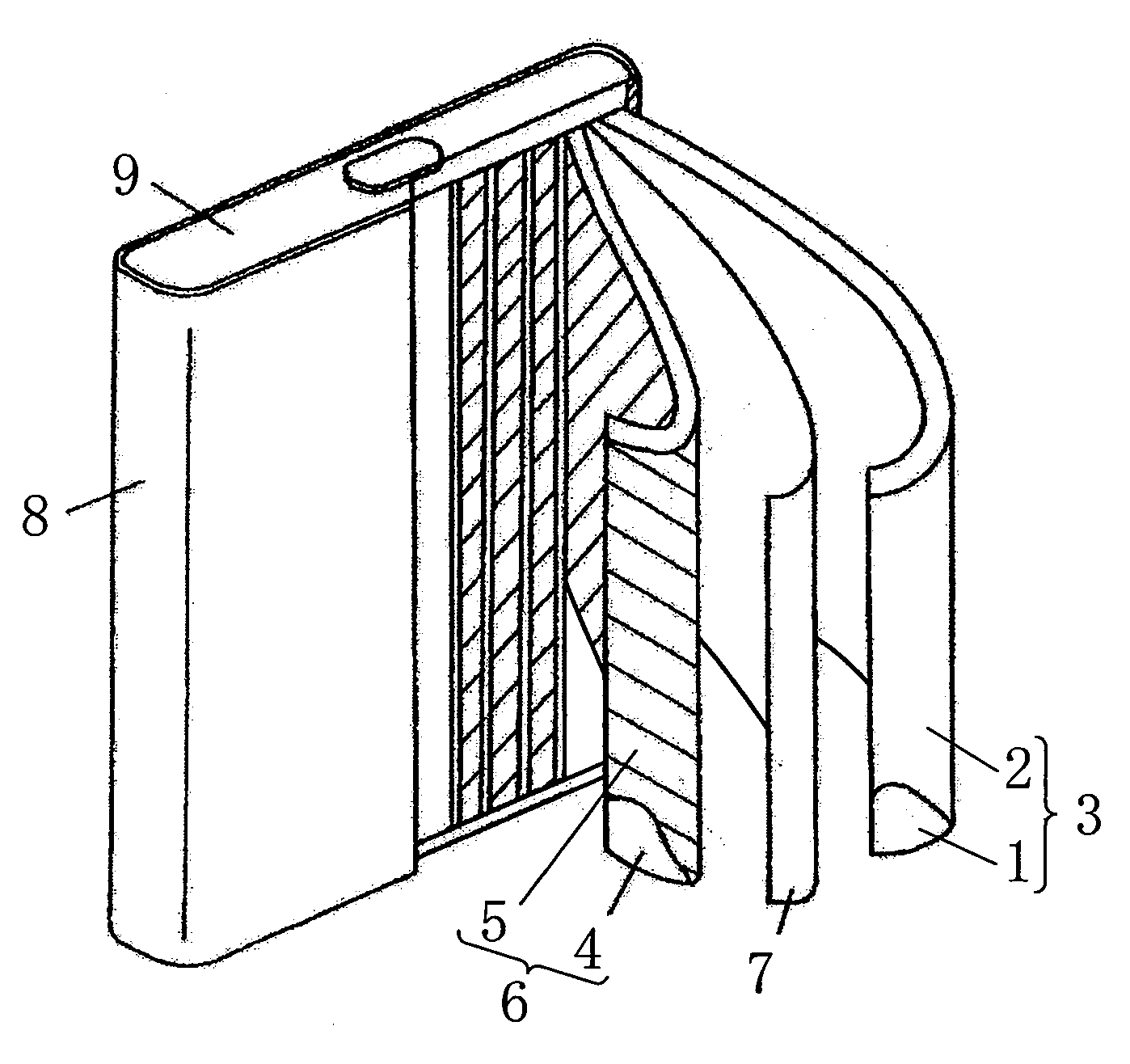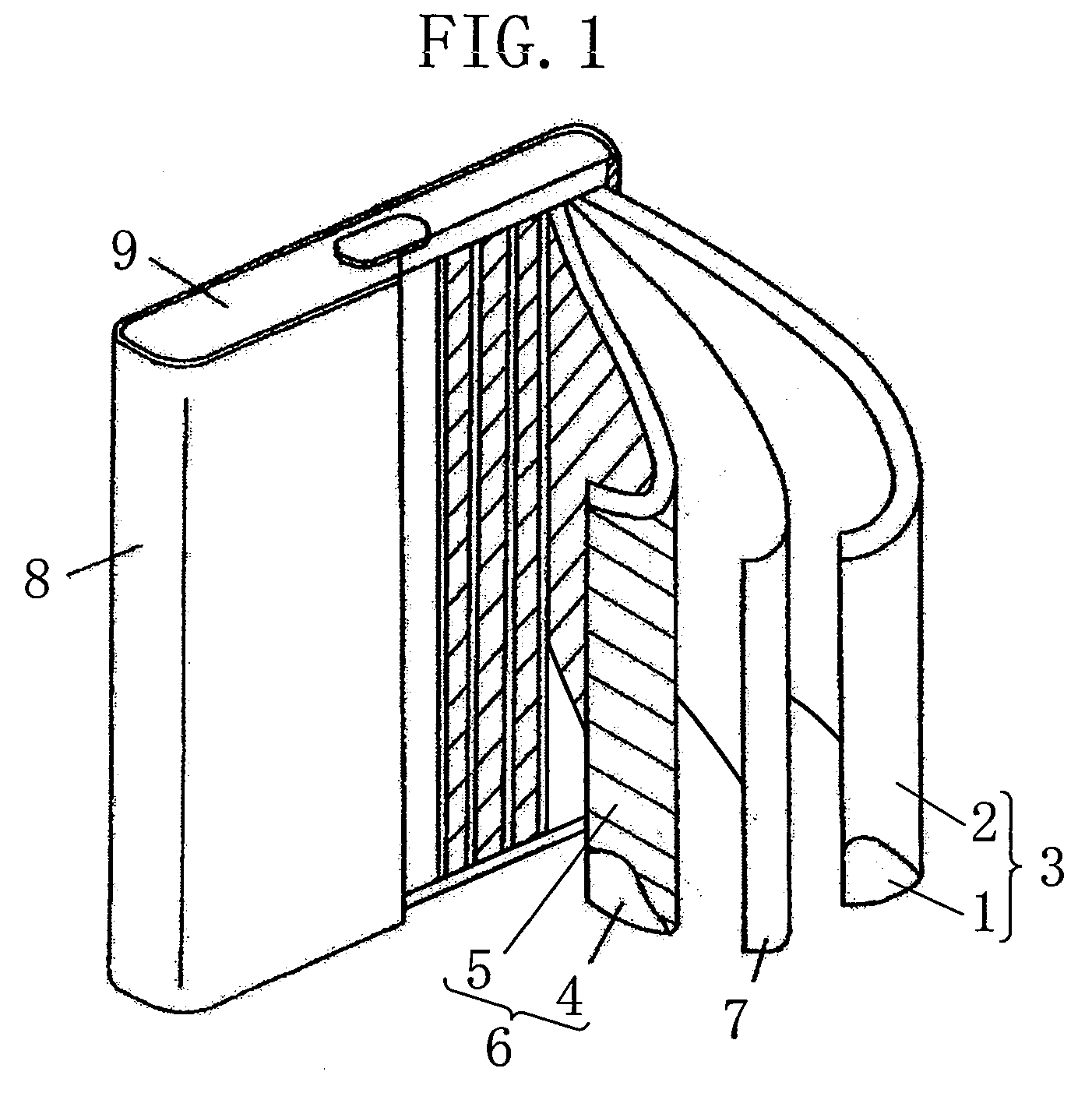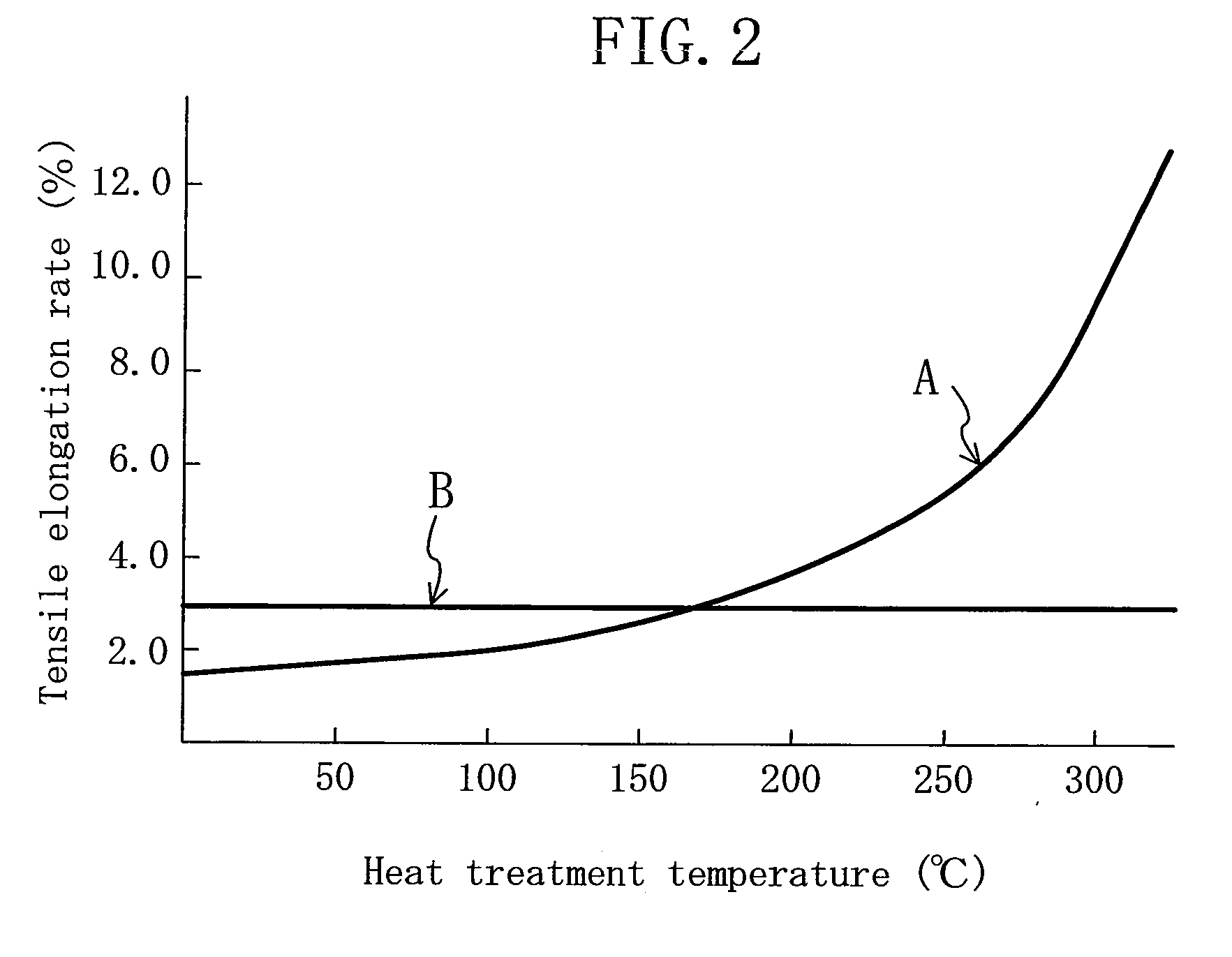Nonaqueous electrolyte secondary battery and method for producing the same
a technology of nonaqueous electrolyte and secondary batteries, which is applied in the direction of wound/folded electrode electrodes, cell components, sustainable manufacturing/processing, etc., can solve the problem of not being able to avoid the occurrence of buckling deformation along the length direction of the electrode group, and achieve the effect of not reducing stress
- Summary
- Abstract
- Description
- Claims
- Application Information
AI Technical Summary
Benefits of technology
Problems solved by technology
Method used
Image
Examples
Embodiment Construction
[0027]Hereinafter, embodiments of the present invention will be described with reference to the accompanying drawings. Note that the present invention is not limited to the following embodiments.
[0028]FIG. 1 is a partial cutaway perspective view schematically illustrating a configuration of a nonaqueous electrolyte secondary battery according to an embodiment of the present invention.
[0029]As shown in FIG. 1, an electrode group in which a positive electrode plate 3 including a positive electrode active material 2 formed on a positive electrode current collector 1, a negative electrode plate 6 including a negative electrode active material 5 formed on a negative electrode current collector 4 are wound into a flat shape with a separator 7 interposed therebetween is placed in a rectangular battery case 8, and the battery case 8 is sealed with a sealing plate 9.
[0030]The positive electrode plate 3 is obtained by performing, after applying a positive electrode mixture slurry containing t...
PUM
| Property | Measurement | Unit |
|---|---|---|
| tensile elongation rate | aaaaa | aaaaa |
| temperature | aaaaa | aaaaa |
| pressure | aaaaa | aaaaa |
Abstract
Description
Claims
Application Information
 Login to View More
Login to View More - R&D
- Intellectual Property
- Life Sciences
- Materials
- Tech Scout
- Unparalleled Data Quality
- Higher Quality Content
- 60% Fewer Hallucinations
Browse by: Latest US Patents, China's latest patents, Technical Efficacy Thesaurus, Application Domain, Technology Topic, Popular Technical Reports.
© 2025 PatSnap. All rights reserved.Legal|Privacy policy|Modern Slavery Act Transparency Statement|Sitemap|About US| Contact US: help@patsnap.com



